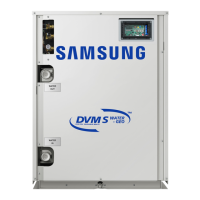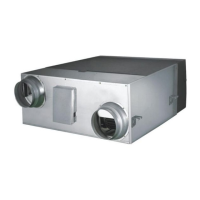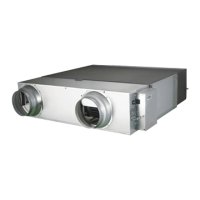Do you have a question about the Samsung DVM S VRF and is the answer not in the manual?
Details the meaning of each character in the outdoor unit model name, covering classification, capacity, version, and product type.
Explains unit classification, features, version, product type, rating voltage, and mode for the outdoor units.
Summarizes advantages including capacity, energy efficiency, heating performance, and smart management for the DVM S system.
Explains the control logic that extends heating mode operation during defrost cycles by monitoring air resistance.
Details maximum piping lengths and height differences, and smart management features for energy efficiency.
Lists outdoor units and their compatibility with various HP capacities and module counts, crucial for system design.
Shows compatible indoor units for various capacities and types, indicating available options for system configuration.
Provides visual representations of outdoor unit models and their configurations, aiding in physical planning.
Details electrical, performance, and physical specifications for premium compact outdoor units.
Outlines the technical specifications for standard outdoor units, covering performance and electrical data.
Presents detailed specifications for energy-efficient outdoor units, covering performance and electrical aspects.
Lists electrical data like voltage, current, and power input for premium compact outdoor units.
Provides electrical specifications including voltage, current, and power for standard outdoor units.
Details electrical parameters like voltage, current, and power for energy-efficient outdoor units.
Presents sound pressure levels for various models in cooling and heating modes across different frequencies.
Shows sound power levels for different models, indicating the sound output at various octaves.
Illustrates allowable operating temperature ranges for cooling and heating modes based on indoor and outdoor conditions.
Explains how frost affects heating capacity and provides a correction factor based on outdoor temperature.
Illustrates refrigerant flow and component connections for the outdoor unit's cooling system.
Shows refrigerant piping and component layout for the outdoor unit's heating system.
Guides on connecting electrical wiring and configuring power/communication cables for outdoor units.
Specifies minimum clearance requirements around outdoor units for proper ventilation and service.
Details base construction, unit installation, and drainage methods, including roof installation considerations.
Advises on installing ducts to protect units from wind and snow, ensuring optimal operation.
Covers refrigerant pipe installation, tool usage, compatibility, sizing, and additional refrigerant calculation.
Guides on choosing appropriate branch joints and distribution headers based on indoor unit capacity.
Explains how to calculate and add refrigerant based on pipe length and indoor unit configurations for HP and HR models.
Specifies the required temper grade and minimum thickness for refrigerant pipes based on outer diameter.
Illustrates correct and incorrect methods for installing refrigerant pipes between outdoor units in module configurations.
Shows allowable pipe lengths and provides visual examples for single and module installations.
Lists various controllers and their models, images, remarks, and usage for individual and centralized control.
Details accessories for integrated management systems and gateways, including their models and functions.
Describes accessories for installation, testing, and other miscellaneous items like room sensors.
Shows compatibility matrices for indoor unit accessories, including panels, drain pumps, and kits.
Lists compatibility for piping accessories like Y-joints, distribution headers, MCU, EEV kits, and PDM kits.











